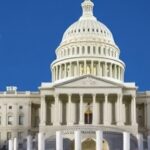In a stark revelation from recent economic data, the U.S. middle class is grappling with unprecedented financial pressure as Inflation has driven up the cost of living by 25% since 2020, while wage growth remains stubbornly below par. This disconnect is eroding household budgets, sparking widespread anxiety about long-term affordability in the world’s largest economy.
Essential Goods Skyrocket, Squeezing Family Budgets
The relentless rise in Inflation has transformed everyday shopping into a high-stakes balancing act for millions of American families. According to the Bureau of Labor Statistics (BLS), prices for groceries, housing, and transportation—core components of the cost of living—have surged dramatically over the past five years. For instance, food prices alone have climbed 25.6% since the start of 2020, with staples like eggs and bread seeing even steeper increases during supply chain disruptions and global events.
Consider the case of Sarah Jenkins, a 42-year-old schoolteacher from suburban Ohio, whose monthly grocery bill has ballooned from $600 to $850. “We’re skipping luxuries like organic produce and even cutting back on meat to make ends meet,” Jenkins shared in an interview. Her story mirrors a national trend: the Consumer Price Index (CPI) for urban consumers shows that Inflation peaked at 9.1% in June 2022 before cooling to around 3% in recent months, but the cumulative effect lingers. Housing costs, another pillar of middle-class stability, have risen 28% in the same period, pushing rent and mortgage payments to record highs in cities like Austin and Denver.
This escalation isn’t abstract; it’s reshaping lifestyles. A report from the Federal Reserve Bank of New York highlights how the middle class—defined as households earning between $50,000 and $150,000 annually—has seen its purchasing power diminish by an average of 8% when adjusted for inflation. Transportation fuel prices, volatile due to geopolitical tensions, added another layer of strain, with gasoline averaging $3.50 per gallon nationwide, up from $2.20 pre-pandemic levels.
- Groceries: Up 25.6%, with dairy and proteins hit hardest.
- Housing: Rent increases averaging 15-20% in major metros.
- Energy: Electricity bills rose 20%, exacerbating utility costs.
Economists attribute this to a perfect storm of pandemic recovery, supply shortages, and fiscal stimulus that fueled demand without matching supply. The result? A middle class increasingly reliant on credit cards, with household debt reaching $17.5 trillion in Q3 2023, per Federal Reserve data.
Wage Growth Trails Inflation, Widening Income Disparities
Despite headlines of a robust job market, wage growth in the US economy has failed to deliver relief to the middle class. The BLS reports that average hourly earnings rose by about 20% from 2020 to 2024, lagging the 25% inflation creep and leaving real wages—adjusted for purchasing power—down 5% overall. For middle-income workers in sectors like education, retail, and manufacturing, the gap is even more pronounced, with many seeing annual raises of just 3-4% amid corporate cost-cutting.
Take the manufacturing sector, a traditional middle-class stronghold. Union negotiations at auto giants like Ford and GM yielded 25% wage hikes over four years in 2023, but for non-unionized workers, gains were minimal. “The wage growth we’re seeing is uneven; it’s benefiting high earners in tech and finance more than the average family,” notes Dr. Elena Ramirez, an economist at the Brookings Institution. Her analysis of payroll data shows that while the national unemployment rate hovers at 3.8%, the quality of jobs created often doesn’t match pre-inflation pay scales.
This stagnation is fueling a sense of betrayal among workers. In focus groups conducted by Pew Research Center, 62% of middle-class respondents expressed frustration that their efforts aren’t translating to financial security. Gig economy participants, numbering over 36% of the workforce according to Upwork, fare worse, with median earnings stagnant at $20 per hour despite inflated operational costs like gas and vehicle maintenance.
- Real wage decline: -5% since 2020 for median earners.
- Sector disparities: Tech wages up 30%, manufacturing only 15%.
- Benefits erosion: Health premiums rose 20%, outpacing pay bumps.
The Federal Reserve’s interest rate hikes, aimed at taming inflation, have inadvertently slowed wage negotiations by increasing borrowing costs for businesses. As a result, the middle class’s share of national income has dipped to 43%, the lowest in decades, per U.S. Census Bureau figures, exacerbating wealth inequality.
Consumer Confidence Crumbles Under Affordability Crunch
The psychological toll of this economic mismatch is evident in plummeting consumer sentiment. The University of Michigan’s Consumer Sentiment Index fell to 68.9 in October 2023, its lowest since the 2020 recession, driven by fears over the cost of living. Middle-class households, once the engine of the US economy, are delaying big-ticket purchases like homes and cars, leading to a 15% drop in new home sales year-over-year.
Surveys from Gallup reveal that 55% of Americans now live paycheck to paycheck, up from 39% in 2019, with the middle class bearing the brunt. “Inflation isn’t just numbers on a chart; it’s the dinner we can’t afford or the vacation we postpone indefinitely,” says Mark Thompson, president of the National Association for Middle-Class Families. His organization lobbies for policies like expanded child tax credits, which provided temporary relief but expired amid partisan gridlock.
Regional variations amplify the crisis. In the Rust Belt states like Michigan and Pennsylvania, factory closures and automation have compounded wage growth woes, while coastal cities face acute housing inflation. A Moody’s Analytics study projects that without intervention, middle-class net worth could shrink by 10% by 2025, threatening retirement savings and educational opportunities for the next generation.
Retailers are feeling the pinch too. Walmart and Target reported softer holiday sales in 2023, attributing it to cautious spending. E-commerce giant Amazon noted a shift toward budget options, underscoring how inflation is reshaping consumer behavior across the US economy.
Economists Warn of Long-Term Risks to Economic Stability
Experts are sounding alarms about the broader implications for the US economy if the middle class’s struggles persist. Dr. Paul Krugman, Nobel laureate and New York Times columnist, warned in a recent op-ed, “Persistent inflation outpacing wage growth risks a vicious cycle of reduced spending, slower growth, and deeper inequality.” His view is echoed by the International Monetary Fund (IMF), which downgraded U.S. growth forecasts to 2.5% for 2024, citing household financial fragility.
The middle class’s role as consumers—accounting for 70% of GDP—means their retrenchment could tip the economy into recession. Federal Reserve Chair Jerome Powell acknowledged in congressional testimony that while inflation is moderating, “the scars on household balance sheets will take years to heal.” Policymakers are divided: Democrats push for targeted relief like affordable housing subsidies, while Republicans advocate tax cuts to boost wage growth.
Innovative solutions are emerging at the state level. California’s recent minimum wage hike to $16.50 for fast-food workers aims to address cost-of-living pressures, but critics argue it could accelerate automation. Nationally, calls for a universal basic income pilot grow louder, with proponents citing successful trials in Stockton, California, where monthly stipends improved financial stability without discouraging work.
Corporate America is under scrutiny too. Initiatives like Amazon’s $15 minimum wage in 2018 set a precedent, but recent backsliding on benefits has drawn ire. Labor unions report a 20% surge in membership drives, signaling a potential shift toward stronger bargaining for wage growth.
Path Forward: Policy Shifts and Hope for Recovery
Looking ahead, the trajectory of the US economy hinges on bridging the inflation-wage growth divide. The incoming administration’s agenda could include inflation-indexed wage adjustments and expanded Earned Income Tax Credits, potentially injecting $100 billion into middle-class pockets annually, per Urban Institute estimates. The Fed’s pivot toward rate cuts, anticipated in mid-2024, might ease borrowing and spur investment, but experts caution it won’t retroactively restore lost purchasing power.
Optimism flickers in pockets of resilience. Remote work trends have allowed some middle-class professionals to relocate to lower-cost areas, mitigating housing inflation. Community programs, like food banks and financial literacy workshops, are scaling up to provide immediate aid. As one analyst from the Heritage Foundation put it, “Revitalizing the middle class requires bipartisan commitment to supply-side reforms that tame inflation without stifling growth.”
Ultimately, the middle class’s recovery will define America’s economic narrative. With consumer spending stabilizing and job openings abundant, there’s potential for wage growth to catch up if productivity gains are shared equitably. Monitoring indicators like the Personal Consumption Expenditures (PCE) index will be crucial, as sustained 2% inflation could finally align the cost of living with earnings, restoring faith in the American Dream.









